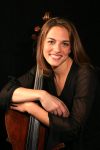There was a time—only a few years ago—that the booking and announcement of a guest conductor for a Knoxville Symphony Orchestra concert engendered in me a gnawing feeling of dread and trepidation. Thankfully, those days seem to be over as the KSO’s choices of late have been excellent, and in many cases, downright exciting. This excitement takes on even greater meaning with the impending conductor search for Maestro Lucas Richman’s replacement, a process that will show its public face next season.
 The most recent conducting guest to stand boldly before the KSO was Lawrence Loh who oversaw the weekend’s pair of Masterworks concerts that featured Tchaikovsky’s Symphony No. 4 in F Minor, Shostakovich’s Cello Concerto No. 1, and the Roman Carnival Overture of Hector Berlioz. Loh brought an artisan storyteller’s sensitivity to the evening’s works, shaping passages with clarity and power via beautifully sculpted dynamics, and allowing instrumental images to emerge with satisfying nuance and detail. Exciting, too, was watching Loh and the orchestra open new windows for themselves and the audience, revealing orchestral character not seen, or heard, before.
The most recent conducting guest to stand boldly before the KSO was Lawrence Loh who oversaw the weekend’s pair of Masterworks concerts that featured Tchaikovsky’s Symphony No. 4 in F Minor, Shostakovich’s Cello Concerto No. 1, and the Roman Carnival Overture of Hector Berlioz. Loh brought an artisan storyteller’s sensitivity to the evening’s works, shaping passages with clarity and power via beautifully sculpted dynamics, and allowing instrumental images to emerge with satisfying nuance and detail. Exciting, too, was watching Loh and the orchestra open new windows for themselves and the audience, revealing orchestral character not seen, or heard, before.
The Tchaikovsky Symphony No. 4 on the second half of the evening proved just how important a conductor’s depth is to the work. After the first movement’s brass fanfare-like opening—gorgeously balanced and layered in this case—Loh kept the swings of programmatic emotion moving and varied, preventing the otherwise long movement from settling into a rut of monochromatic textures.
The mood of the second Andantino movement, one of weary melancholy, was set by gorgeously described passages from principal oboe Claire Chenette. The third movement—all pizzicato strings broken only by woodwind interruptions—was, by apparent design, a disconnected dream-like interlude. That dream is broken by the finale movement, one in which Loh and the orchestra skillfully built to a climax of solidity and volume that insisted on dispelling any gray clouds that may have been lingering.
Loh opened the evening with Berlioz’s Roman Carnival Overture, a performance that was a happy preface to the conductor’s stylistic showing of carefully sculpted balances and dynamics that would mark the evening. Gorgeous, too, was the English horn solo by Ayca Yayman.
 After the Berlioz, Loh and the orchestra was joined by cellist Julie Albers for Dmitri Shostakovich’s Concerto No. 1 for Cello and Orchestra in E-flat, one of the most demanding works in the cello repertoire. The piece demands both technique and interpretation, qualities Albers showed in abundance, and qualities solidly backed up by Loh and the orchestra. From the opening statement theme of four notes—G, E, B, and B-flat—Albers guided the nervous tension of the narrative skillfully through its persistent journey of thematic questions, answers, and permutations. One could certainly appreciate that Albers kept the composer’s nervous narrative intact all the while luxuriating in rich string tone, carefully avoiding excessive expressionistic brutality. Principal horn Jeffery Whaley (the only brass instrument in the score) played a major role here as well, taking the theme and reflecting it back with an edge that left no doubt as to its intent.
After the Berlioz, Loh and the orchestra was joined by cellist Julie Albers for Dmitri Shostakovich’s Concerto No. 1 for Cello and Orchestra in E-flat, one of the most demanding works in the cello repertoire. The piece demands both technique and interpretation, qualities Albers showed in abundance, and qualities solidly backed up by Loh and the orchestra. From the opening statement theme of four notes—G, E, B, and B-flat—Albers guided the nervous tension of the narrative skillfully through its persistent journey of thematic questions, answers, and permutations. One could certainly appreciate that Albers kept the composer’s nervous narrative intact all the while luxuriating in rich string tone, carefully avoiding excessive expressionistic brutality. Principal horn Jeffery Whaley (the only brass instrument in the score) played a major role here as well, taking the theme and reflecting it back with an edge that left no doubt as to its intent.
In the slow second movement, the hostility between the horn and the cello has been dialed back into a lyricism that cannot hide a sense of bleakness, with Loh and the orchestra providing a painterly, but melancholy background of resignation. The third movement, an extended solo cadenza for Albers’ cello, was a masterpiece of rising and falling intensity of tone and texture. The finale movement was nothing short of beautifully controlled frenzy from Albers and a contrast of saturation and sharp angles from the orchestra. Those who followed this narrative closely, walked off to intermission with a feeling of both amazement and admiration for this marvelous performance.







